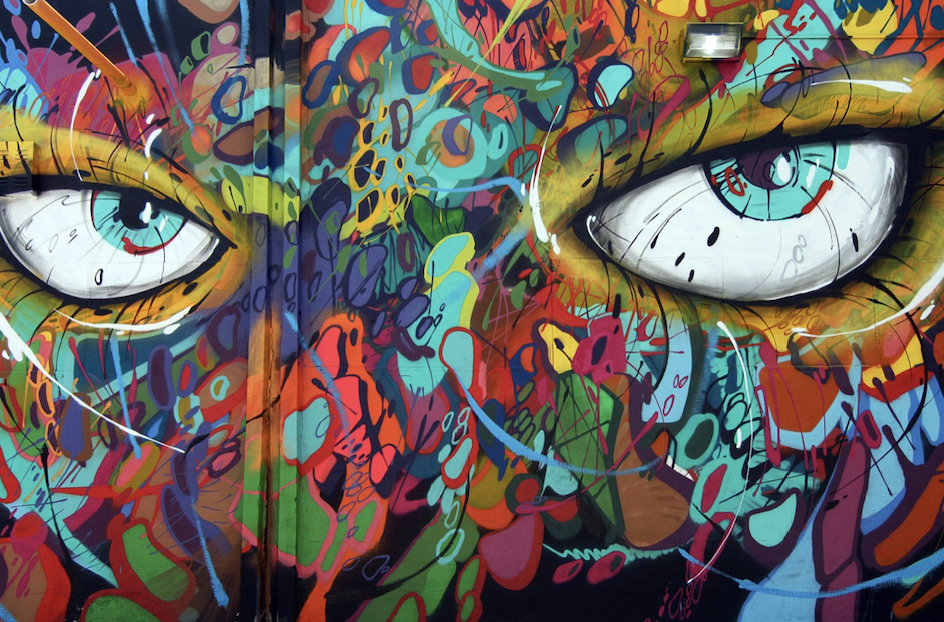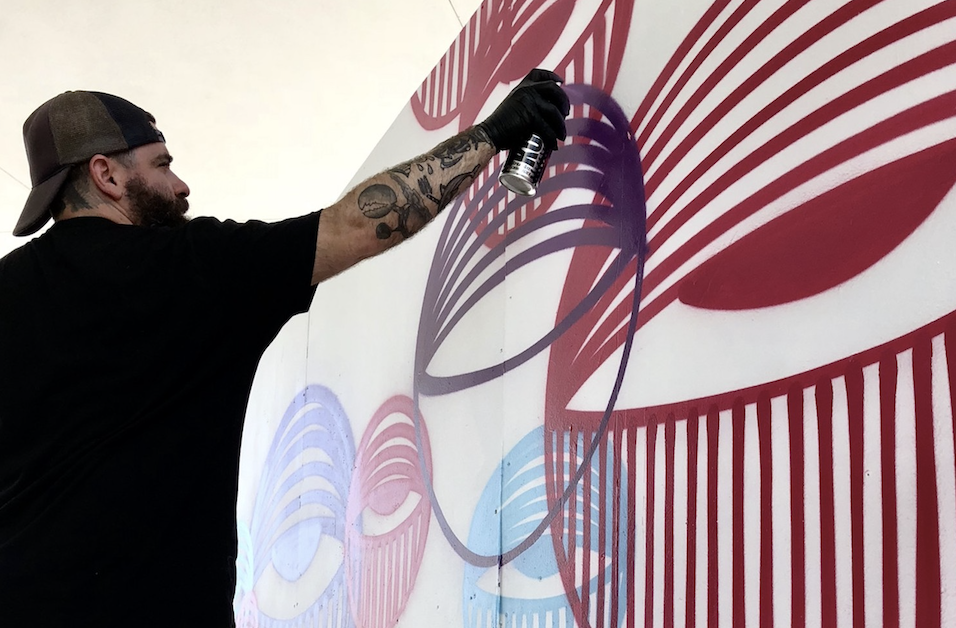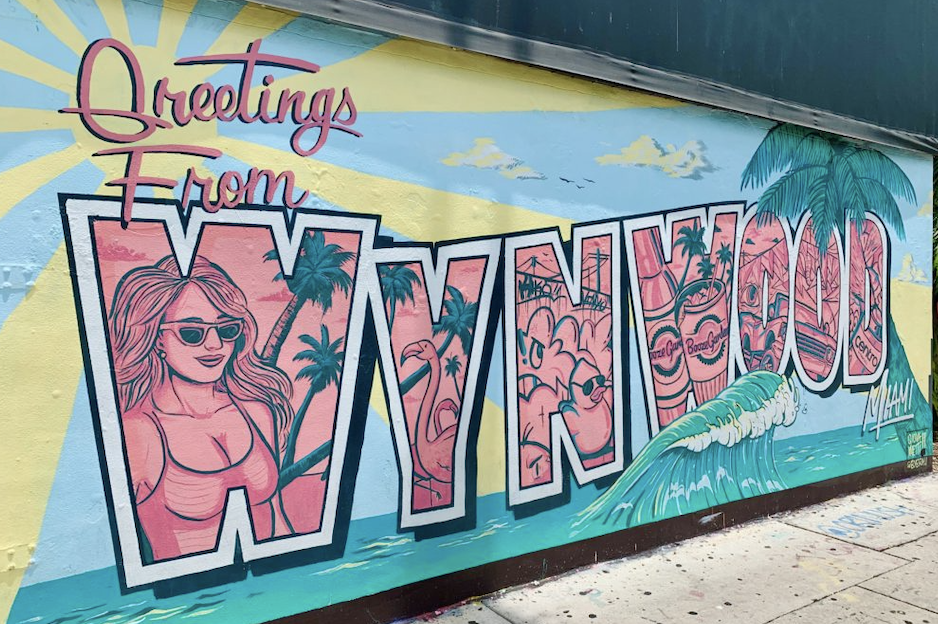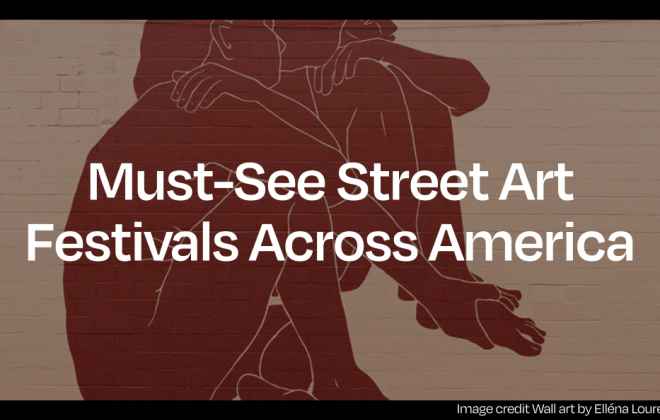
The History of Graffiti & Street Art in Miami: 1970 – 2023
A Brief History of Street Art in Miami
Nestled along the sun-drenched shores of Florida, Miami has become a dynamic hub for street art and graffiti. The city’s colourful history is interwoven with the evolving tapestry of urban art, where walls serve as canvases for creative expression. From its humble beginnings to its current international acclaim, the Miami street art scene has undergone a remarkable transformation.

The roots of Miami’s street art culture can be traced back to the 1970s, 1980s and 1990s when graffiti artists began leaving their mark on the city’s walls. Inspired by the energy and freedom of New York’s street art movement, local artists like Atomik, Crome, and began to emerge, infusing the streets with their distinctive styles and unique narratives.
The annual Art Basel Miami Beach event further solidified the city’s reputation as an artistic epicentre, drawing artists and collectors from around the world. Visionary artists like Shepard Fairey, Banksy, and Invader made their mark on Miami’s streets, leaving an indelible imprint on the city’s artistic landscape.
1970s
The 1970s marked a pivotal moment in Miami’s artistic evolution, as the city’s streets became a vibrant canvas for a burgeoning street art and graffiti movement. Against a backdrop of social change and artistic experimentation, Miami’s urban landscape became alive with bold expressions of creativity and cultural rebellion.
As the city experienced a wave of urban renewal and revitalisation, abandoned buildings and neglected walls became prime targets for Miami’s emerging street artists. Influenced by the graffiti and street art movements that had taken root in New York and other major cities, local artists such as Zephyr, Maze, and Mista One brought their distinctive styles and messages to the streets of Miami.

Graffiti art in the 1970s was marked by its rawness and spontaneity. Artists would clandestinely venture into the night, armed with spray cans and a desire to leave their mark on the urban landscape. Lettering styles evolved, embracing more intricate and elaborate designs, often accompanied by vibrant colours that added a dynamic energy to the city’s walls.
The spirit of collaboration and community was also at the core of the Miami street art scene in the 1970s. Artists would come together in abandoned warehouses and other alternative spaces to exchange ideas, share techniques, and push the boundaries of their craft. These gatherings fostered a sense of camaraderie and artistic growth, fuelling the movement’s momentum.
1980s
The 1980s in Miami witnessed a dynamic and transformative period for street art and graffiti. Against a backdrop of cultural shifts and urban revitalisation, the city became a playground for artistic expression, with walls and surfaces serving as the canvas for a vibrant movement that would leave an indelible mark on the city’s artistic landscape.

As Miami experienced a resurgence of creative energy, street artists and graffiti writers embraced new techniques, styles, and influences. The once underground art form began to find its way into the mainstream, capturing the attention of both art enthusiasts and the general public.
The streets of Miami became a vibrant tapestry of colour, shapes, and messages, with artists like Emerge, Abstrk, and Crome leading the charge. Their works were characterised by bold lettering, intricate designs, and a fusion of influences from the city’s diverse cultural fabric. Walls and buildings transformed into vibrant murals, breathing new life into forgotten spaces and engaging passersby with their visual narratives.
The 1980s also saw the rise of mural festivals and events that celebrated street art and graffiti. These gatherings brought artists from around the world to Miami, resulting in an exchange of ideas and artistic collaboration. Walls were transformed into larger-than-life masterpieces, each mural telling a unique story and contributing to the vibrant tapestry of the city’s streets.
While the movement faced challenges and often grappled with the perception of legality, artists in the 1980s remained undeterred, driven by a passion for self-expression and a desire to connect with their audience. Their works challenged social norms, sparked conversations, and celebrated the rich diversity of Miami’s cultural heritage.
1990s
The 1990s were an exhilarating time for street art and graffiti in Miami. Visionaries such as Ahol Sniffs Glue, Atomik, and Trek 6 made their mark on the city’s walls, infusing them with a unique blend of local flavour, social commentary, and personal storytelling.

The streets of Miami became an open-air gallery, showcasing a diverse range of styles and techniques. Murals and tags adorned the city’s buildings, bridges, and alleyways, reflecting the vibrant spirit of Miami’s cultural melting pot. Artists drew inspiration from their surroundings, incorporating elements of the city’s natural beauty, its music scene, and the rich tapestry of its communities.
The 1990s also saw a growing appreciation for the art form, with local galleries and institutions recognizing the value of street art and graffiti as a legitimate artistic movement. Exhibitions and events brought these works indoors, bridging the gap between the streets and the traditional art world.
Collaboration and camaraderie were at the heart of the Miami street art scene in the 1990s. Artists formed crews, working together to create large-scale murals and organizing underground exhibitions that celebrated the raw energy and creative freedom of the movement.
2000s
Miami’s street art scene expanded beyond the traditional confines of walls and buildings. Artists began to explore new mediums and techniques, incorporating stencil art, wheat-pasting, and even three-dimensional installations into their repertoire. The city’s public spaces transformed into immersive experiences, blurring the line between art and urban environment.

Collaboration and community remained at the heart of Miami’s street art culture. Artists formed collectives and crews, working together to create large-scale murals and transformative installations. Festivals and events, such as Art Basel Miami Beach and Wynwood Walls, showcased the city’s burgeoning street art scene, attracti
ng artists and art enthusiasts from around the world.
As the decade drew to a close, Miami had firmly established itself as a global hub for street art and graffiti. The city’s Wynwood neighbourhood, in particular, became a mecca for urban art, with its vibrant murals and ever-evolving street art scene attracting visitors from far and wide.
2010s
Beyond the visual aspect, street art in 2010s Miami became a platform for social commentary and activism. Artists tackled pressing issues such as climate change, social justice, and cultural identity, using their work as a medium for change and awareness. Each mural and tag became a visual dialogue, provoking thought and inspiring conversations among those who encountered them.

The rise of social media played a significant role in the dissemination and documentation of Miami’s street art scene. Instagram feeds became virtual galleries, allowing artists to reach a global audience and establish their presence in the digital realm. Murals and tags became sought-after backdrops for photoshoots and selfies, adding another layer of interaction and engagement.
As the decade drew to a close, Miami’s street art and graffiti scene had firmly cemented its place in the city’s cultural fabric. The murals became iconic landmarks, drawing tourists and art enthusiasts from all corners of the globe. The creative spirit of the 2010s had transformed Miami’s streets into an ever-evolving tapestry of artistic expression, where the pulse of the city and the pulse of art beat as one.
2023
Miami’s Wynwood neighbourhood remains a focal point for street art, with its iconic Wynwood Walls serving as a hub for creativity. This open-air museum showcases an array of local and international talent, drawing visitors into a kaleidoscope of captivating murals and immersive installations. Every corner turned reveals a new masterpiece, inviting exploration and sparking dialogue.

Beyond Wynwood, street art has sprawled across Miami, embracing new spaces and unconventional surfaces. Artists have transformed warehouses, parking garages, and even abandoned buildings into vibrant expressions of art. Neighbourhoods like Little Haiti and Overtown have become canvases for artists to engage with local communities and shed light on important social issues.
In the heart of Miami, street art and graffiti stand as a testament to the power of artistic freedom, cultural exchange, and the indelible mark that art can leave on a city’s identity. As the sun-drenched streets of Miami continue to inspire and ignite the creative spirit, the legacy of street art and graffiti in this iconic city is destined to endure.
Read more: The Captivating History of Street Art & Graffiti in New York
Check out top-rated local artists near you!
Are you an artist ? Sign Up












